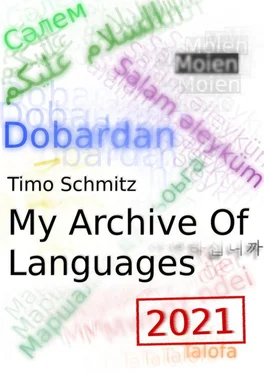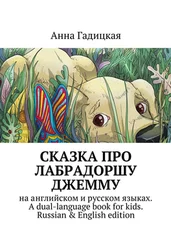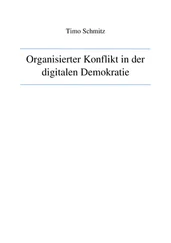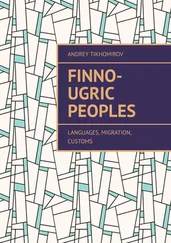Spoken in: Ladakh (India), Baltistan (Pakistan), probably also spoken by the Changpa who live in Ngari Prefecture in the PRC
Official language in: Ladakh (India) – Balti and Standard Tibetan are official languages as well
Speakers: c. 130,000
Scripts: Tibetan
Standard Tibetan/ Wü-Zang Tibetan
Spoken in: naturally spoken in the northwest, centre and south of the Tibet Autonomous Region (China); as language of education taught and used in the whole Tibet Autonomous Region; as language of religion in the Tibet Autonomous Region, Qinghai, Sichuan and Yunnan (China), as well as Ladakh and Sikkim (India), Baltistan (Pakistan), Bhutan and Nepal
Official language in: Tibet Autonomous Region (China), Upper Mustang (Nepal), Ladakh (India), Sikkim (India) – Standard forms of Kam Tibetan and Amdo Tibetan are official languages in parts of Qinghai, Yunnan, Gansu and Sichuan Provinces in China
Speakers: c. 1-3 million
Scripts: Tibetan
Eastern Kham: Yajiang speech
Spoken in: Yajiang County in Garzê Tibetan Autonomous Prefecture (Sichuan, China)
Official language in: Kam Tibetan is officially used in the media and taught in schools, the Tibetan language is an official language in Yajiang County
Speakers: c. 35,000-40,000
Scripts: Tibetan
Northern Kham: Yushu dialect
Spoken in: Yushu Tibetan Autonomous Prefecture (Qinghai, China)
Official language in: Kam Tibetan is officially used in the media and taught in schools, the Tibetan language is the official language in Tibetan areas in Qinghai
Speakers: c. 280,000
Scripts: Tibetan
Southern Tibetan: Dzongkha
Spoken in: Bhutan, probably also a few speakers in Sikkim (India)
Official language in: Bhutan
Speakers: c. 600,000
Scripts: Tibetan
Southern Tibetan: Sikkimese
Spoken in: Sikkim and Darjeeling (India), Nepal, probably also a few speakers in Bhutan
Official language in: Sikkim (India)
Speakers: c. 70,000
Scripts: Tibetan
Amdo Tibetan
Spoken in: Qinghai Province, Ngawa Tibetan and Qiang Autonomous Prefecture in Sichuan Province, partially in Naqu City in Tibet Autonomous Region and Xiahe County in the Gannan Tibetan Autonomous Prefecture in Gansu Province (China)
Official language in: Amdo Tibetan is officially used in the media and taught in schools in Qinghai
Speakers: c. 1.5-2 million
Scripts: Tibetan
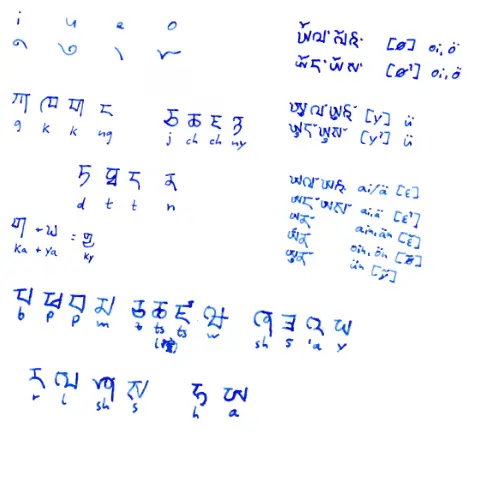
Adopted from: Timo Schmitz: Sorry, I don’t speak Tibetan, self-published online publication, 23 March 2013
Kam Dialect of Kangding (Standard Kam Tibetan)/ Eastern Kham - ཁམས་སྐད
j [ɕ]
yi [i:]
ng [ŋ]
e [ɛ] ?
é [e:]
ny [ɲ]
ä [æ]
o [ɔ]
zh [tɕ], [ts]
êu [ejy], nasalized [ɛ]
ê [ǝ] ?
ö [ø]
q [tɕ]
yue [jyɛ]
Ji ro de mo ying – Hello!
Nya sa ädé – Good morning!
de mo ying – very good
zhuo ma de mo ying – everything is fine
zhuo ma – everything
gan na dêu? – Where do you live?
tu zê ma nong – You’re welcome!
gan na, gan na – That’s not a big matter (lit.: ‘where, where’)
ji mä syêu – No problem!, Not a big deal!
yā – Okay!
go – Yes!
dö ji rê? – What is this?
dö bêqa rê – This is a book!
dê ji rê? – What is that?
dê...rê. – That is...
ma rê – no; it is not; it isn’t
xê – yes; it is
na yi xê – It’s mine!
Qa kong ganna yuerê? – Where is the toilet?
Toxem bu rou ma xê – Not far away!
... ganna yuerê? – Where is...?
Que kacho jierê! – Thank you!
Phrases taken from: Timo Schmitz: Sorry, I don’t speak Tibetan, self-published online publication, 23 March 2013, pp. 36-38
Conversation:
Baima: Ji ro de mo ying!
Deji: Nya sa ädé!
Baima: Ganna dêu?
Deji: Garzê dêu. Ganna dêu?
Baima: Qamdo dêu. Dö jirê?
Deji: Dö bêqa rê.
Baima: Dê jirê?
Deji: Dê bêqa rê. Bêqa nayi xê!
Conversation modified, taken from: Timo Schmitz, 23 March 2013, pp. 36-37
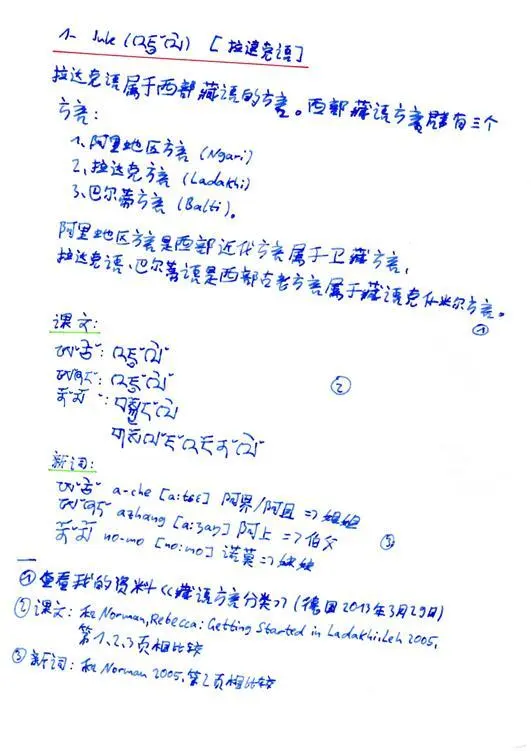
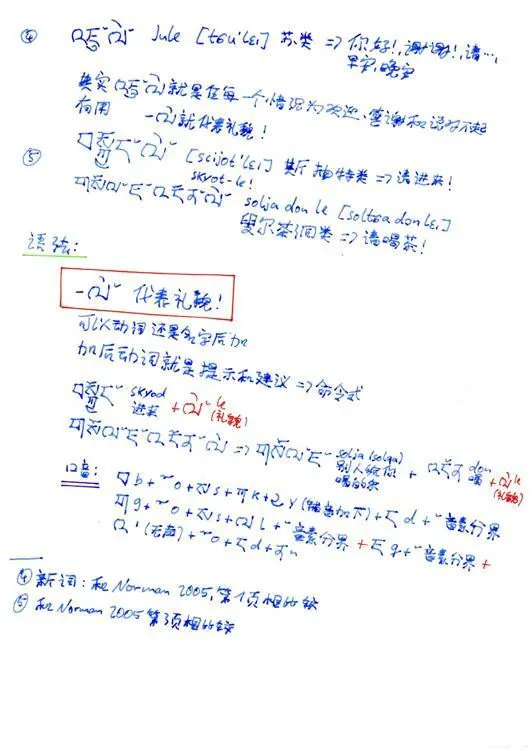
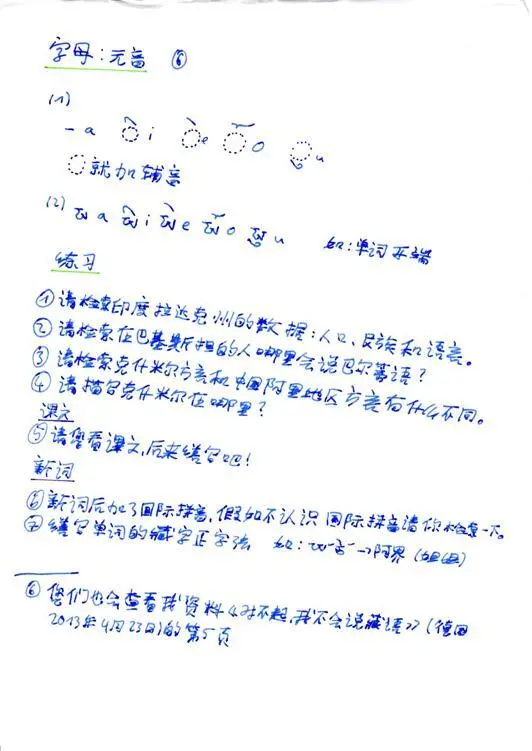

Standard Tibetan - བོད་སྐད་
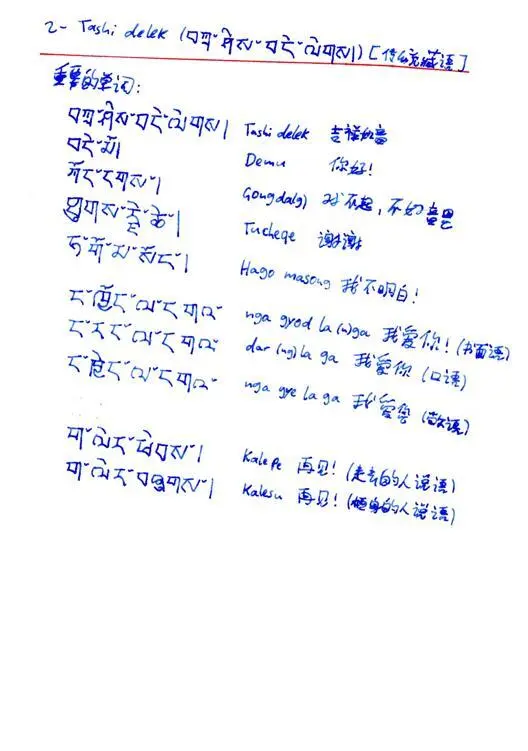
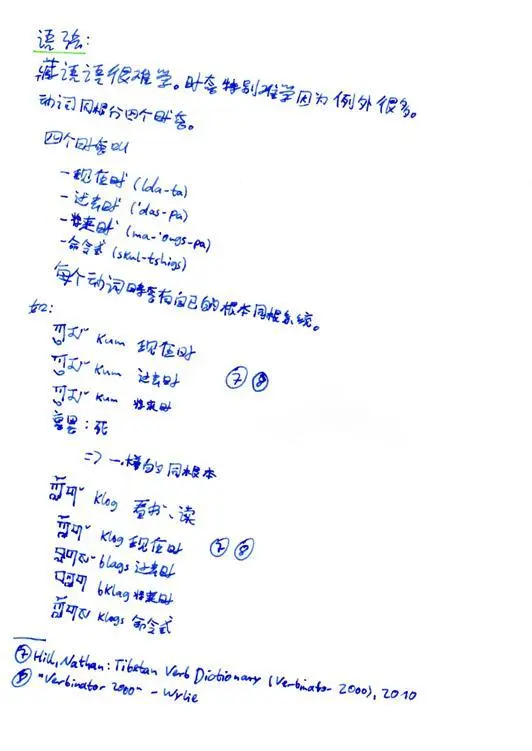
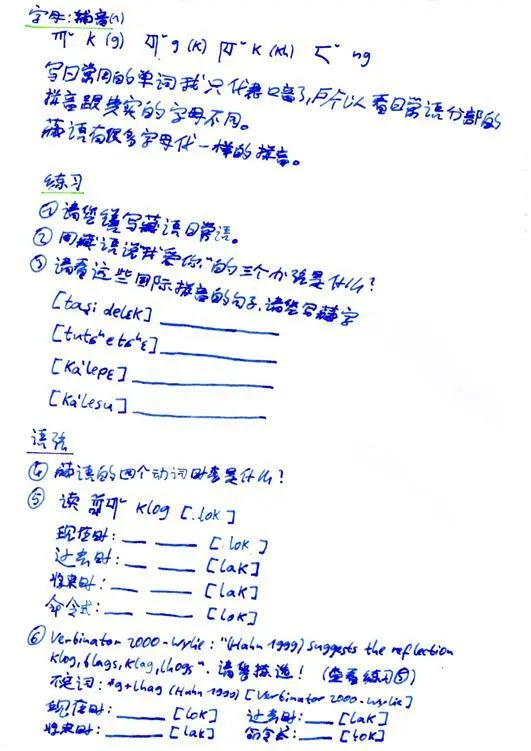
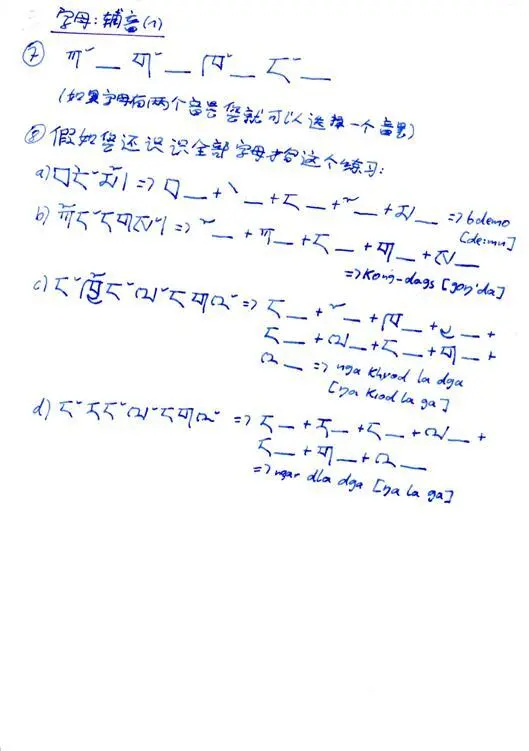
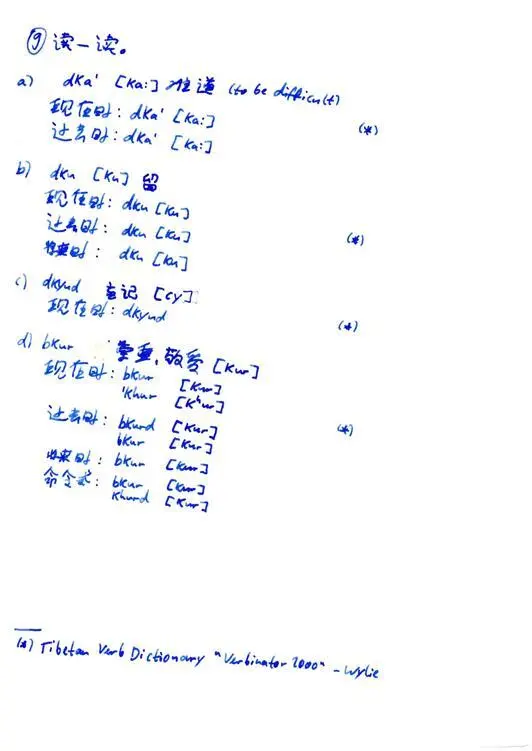
Kam Tibetan of Yajiang (probably Eastern Kham) - ཉག་ཆུ་ཁ་སྐད
j [ɕ]
yi [i:]
ng [ŋ]
e [ɛ] ?
é [e:]
ny [ɲ]
ä [æ]
o [ɔ]
zh [tɕ]
êu [ejy], nasalized [ɛ]
ê [ǝ] ?
ö [ø]
q [tɕʰ]
yue [jyɛ]
dr like a Chinese “r”
êa probably like a nasalised [ɛ]
ue [w]
ao [au]
ui [wɛɪ]
ou [ɔu], [ɔʊ]
nê a sih xê – Hello!
sih xê – good; I’m fine!
nê a, ne – you
ne han de ming – What’s your name?
ne han – you [are] called
ming, mêa – name
ne guen de di de zhao oâ – How old are you ?
de di, dê dey – what
guen, gui – age
zhao oâ – to become
ne na de bu zi, ne la de bê zi – Where are you from ?
na de, la de – where ?
nen de chuk fê dre – What do you want to eat ?
ngeâ degui de bu zi, nge deguy de bê zi – I am from Germany
nga choukeli chuk song dre – I want to eat chocolate
ne ha ming sing ku qea, ne ha mêa sing kou che – Your name sounds so good!
na gkhro – Thank you!
de khro – you are welcome
duy gu che – What is this ?
nen dui gu qi – What did you eat?
ngea choukeli gu qu – I ate chocolate
ne choukeli a go – Do you like chocolate ?
go – like
na gen dou kei zan zha go der, ne gen dou ke san sha go der – Nice to meet you
ne shuai go zhe – You are a handsome man (shuaige) [zhe = xê]
jü zê – time
chi, she – money
xinghwaji – skin cosmetics
ho cho – hair comb
a lo(u) – ring
kung kou – pretty, beautiful, good-looking
Читать дальше
